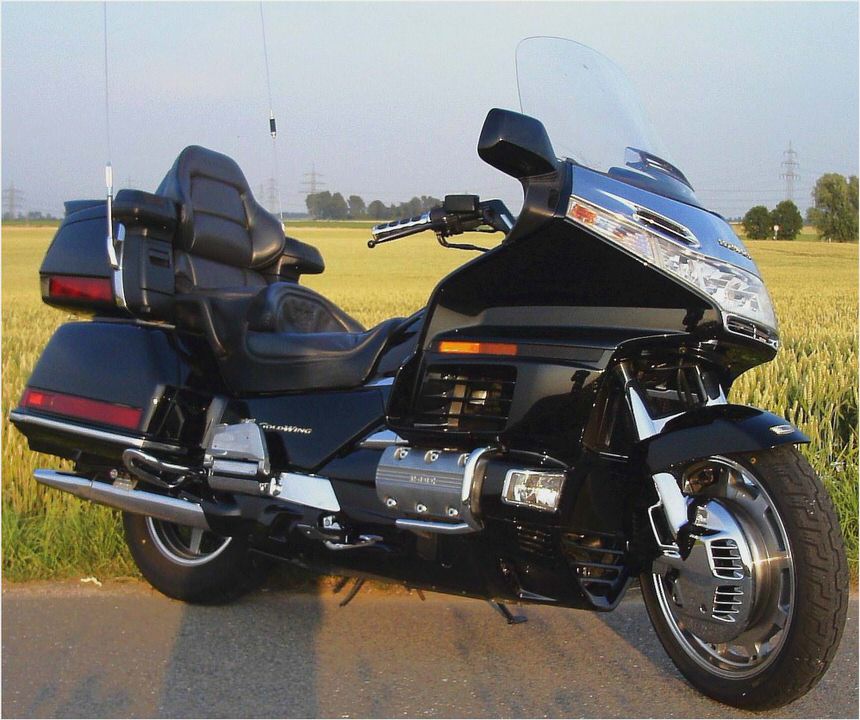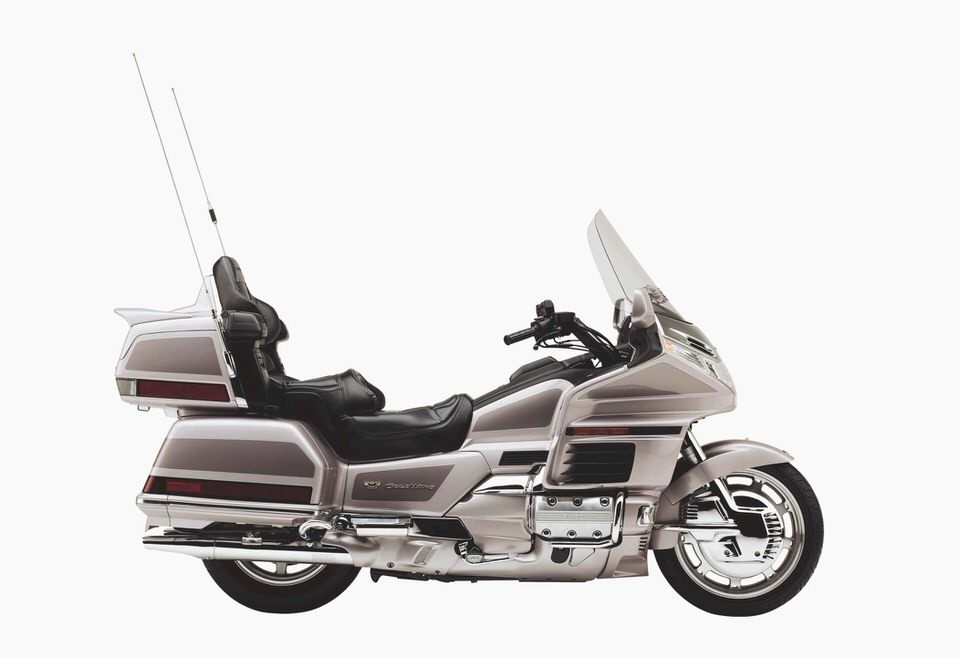
24 Feb 2012 | Join Ian Falloon for a look at one of the touring greats
Honda’s Gold Wing has now been in production for 35 years and is entrenched as a mainstream motorcycle. Yet back in 1972 the idea of a large capacity liquid-cooled flat-four shaft-drive motorcycle was a fairly radical move.
Honda itself had set a bold new standard with its four-cylinder CB750 of 1968, but the 903cc Kawasaki Z1 had overtaken this in 1972. In terms of ultimate all-round performance, the air-cooled, four-cylinder, across-the-frame four-cylinder motorcycle with chain final drive ruled. But not all companies were committed to this layout.
The early 1970s was an era of experimentation in motorcycle layouts, from the triples of Triumph, Kawasaki, Laverda, and Suzuki, to the twins of Moto Guzzi, Ducati, and BMW. Engine layouts had become corporate statements, and it was within this climate of diversity that Soichiro Honda expressed the desire for a new flagship: the largest, fastest, and finest grand touring motorcycle ever, “The King of Motorcycles”.
The new engine needed to be larger than that of Kawasaki’s Z1, more powerful than the Harley-Davidson FLH 1200, and the eventual size was 999cc (a 72mm x 61.4mm bore and stroke). Toothed rubber belts drove a single overhead camshaft on each cylinder bank. Although relatively new to motorcycles at that time, toothed belts were already widely used in cars, and the Gold Wing’s were identical to those on the Honda Civic.
The cylinder-head design was not unlike the CB750, with two valves (37mm inlet and 32mm exhaust) per cylinder. The two-piece camshafts were supported in aluminium bearings, the cylinders and crankcase halves were cast together, and the forged crankshaft was supported by three plain main bearings. Primary drive was by a Hy-Vo chain, with the gearbox mainshaft parallel and underneath the crankshaft.
The wet multi-plate clutch and gearbox could almost have come from the CB750, including identical ratios, although few parts were interchangeable. The 300W alternator and counterbalance shaft, driven by a straight-cut gear behind the primary drive, rotated in an opposite direction to the crankshaft, cancelling any torque reaction. This feature alone opened the Gold Wing to a whole new world of touring motorcyclists previously deterred by the torque reaction inherent in the BMW boxer.
Carburetion was by four Keihin 32mm CV carburettors, and to maintain a low centre of gravity the fuel tank was underneath the seat, between the frame tubes. A fuel pump driven from the rear of the right camshaft provided fuel pressure. The compression ratio was a mild 9.2:1, and the power from the first Gold Wing was a moderate 80hp at 7500rpm.
More than anything else, the quietness of the engine set the Gold Wing apart from other motorcycles.
There was little that was revolutionary about the Gold Wing chassis, but some features were innovative for a touring motorcycle. What appeared to be a conventional fuel tank was actually a storage compartment, containing tools and the electrical components.
It had disc brakes all round, the rear 295mm stainless-steel rotor gripped by a dual opposed-piston caliper. The front brakes were smaller stainless-steel discs (273mm), with single floating-piston calipers.
Also reflecting the quality of the Gold Wing were the wire-spoked wheels with lightweight DID aluminium rims. These wheels were not quite strong enough for the power and weight, particularly the rear 17in rim.
The 4.50H 17A Bridgestone rear tyre was specially developed for the Gold Wing, but the front was a conventional 19in item.
The front fork had larger (37mm) fork legs than the CB750, and the limp rear shock absorbers were adjustable only for spring preload.
The frame was a conventional tubular-steel duplex cradle, and the Gold Wing rewrote the rules regarding acceptable size and weight in a mainstream motorcycle.
Its 265kg bulk was cleverly disguised by the flat-four engine layout, which provided a low centre of gravity. It would take some time before it was fully accepted, but eventually the Gold Wing would become one of Honda’s most important models, and one of the few with a cult following. n
Many thanks to Allen and Lorraine Smith of the Australian Motorcycle Museum, Haigslea, Queensland, for the use of the 1975 Honda Gold Wing featured.
FIVE COLOURFUL FACTS
The prototype for the Gold Wing appeared in 1972, code-named the M1. This was powered by a liquid-cooled, 1470cc, six-cylinder engine, and with a downdraft two-barrel carburettor the power was 80hp at 6700rpm.
The GL1000K0 was released at the Cologne Show in October 1974, but first year sales of only 5000 GL1000s were well under the forecast 60,000.
While testers in America applauded the Gold Wing, the British press greeted it with cynicism. Soon termed a two-wheeled car or ‘Lead Wing’, Bike magazine was particularly scathing, prompting Honda to withdraw its advertising, and refusing the mag test bikes for a year.

In 1977 Honda decided to build a plant in Marysville, Ohio, USA. It opened in June 1979. Gold Wing production commenced in 1980 and in 1985 an engine plant was completed in Anna, Ohio.
Following the success of the Marysville plant Honda expanded to include seven manufacturing plants in the USA.
The Gold Wing grew to 1100cc in 1980 and 1200cc in 1984, with the six-cylinder 1500 released in 1988. The 1800cc Gold Wing appeared in 2001 and continues today.
RESOURCES
Get this book: The Honda Story
http://www.haynes.co.uk/webapp/wcs/stores/servlet/ProductDisplay?catalogId=10001storeId=10001productId=30707langId=-1
This is a great Gold Wing site:
http://www.goldwingworld.com/
Join the Honda Gold Wing forum:
http://www.goldwingowners.com/?gclid=CKao8YGF0J8CFY0vpAodImPFbA
Check out the accessories available for Gold Wings here:
http://www.goldwingcountry.com/index.cfm?mc=101039gclid=CMCOuOuF0J8CFUcwpAodY0j-0Q




- Hero 2014 New Karizma ZMR India, Variant, Price, Review, Details
- Honda CBR 250 R world bikes info
- Purchase used 2011 Honda Insight EX Hybrid 39k, 1 Owner, LIFETIME Warranty…
- Coilovers
- Honda 2011 New Small Concept – Honda springs new mini hatchback GoAuto

